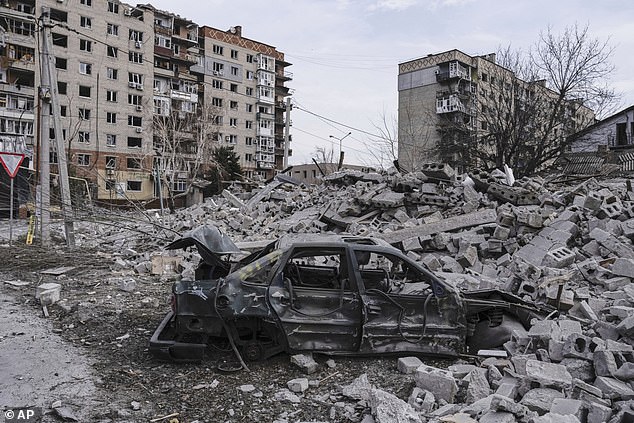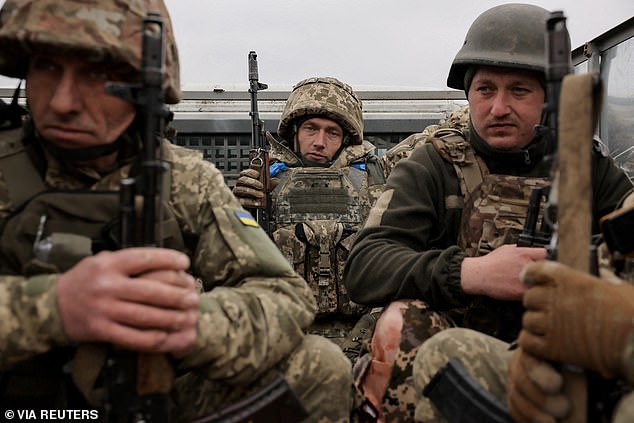Published: | Updated:
Russia did not launch a mass drone strike on civilian targets in Ukraine for the first time in months last night – after Donald Trump said he was ‘pi**ed off’ with the Russian President and threatened to impose damning secondary tariffs.
It was the first time since October that Ukraine did not mention Shaded long distance drone attacks in its overnight reports.
‘We’ll keep monitoring; so far, it doesn’t mean anything,’ National Security and Defense Council official Andrii Kovalenko said on his Telegram channel.
Ukraine did claim to have shot down two Kh-59/69 cruise missiles launched by Russia overnight to attack southeastern Ukraine.
And officials in Dnipropetrovsk Oblast did report drone attacks against the region overnight, claiming limited damage.
The felt absence of drones, which have devastated civilian areas and ports throughout the three-year war, came just days after Trump threatened Russia with tariffs to hit countries buying oil from Russia.
In an interview aired on Sunday, Trump said he was ‘very angry’ with Putin after the latter criticised the leadership of Ukrainian president Volodymyr Zelenskyy.
Trump said Putin’s comments were ‘not going in the right direction’ after the Russian President called for Ukraine to be put under temporary UN control until a ‘competent’ government was elected.
Trump assessed this would mean no deal ‘for a long time’ and said: ‘If Russia and I are unable to make a deal on stopping the bloodshed in Ukraine, and if I think it was Russia’s fault… I am going to put secondary tariffs on oil, on all oil coming out of Russia.’
‘That would be that if you buy oil from Russia, you can’t do business in the United States. There will be a 25% tariff on all oil, a 25- to 50- point tariff on all oil.’



Ukraine also showed restraint in its strikes on Russia, with reports of just three drones being downed over Bryansk region.
Volodymyr Zelenskyy has urged caution in dealing with Trump, and suggested that an effective maritime ceasefire announced last week would be a test of good faith.
‘If the Russians violate this, then I have a direct question for President Trump,’ he said. ‘If they violate, here is the evidence – we ask for sanctions, we ask for weapons, etc.’
Continuing the thought later on Tuesday, he wrote on X: ‘How Russia behaves in the coming days will reveal a lot—if not everything.
Zelenskyy then said late on Sunday that there has been no letup in Russia’s attacks as it drives on with its invasion of its neighbor that began in February 2022.
He said the attacks demonstrated Russia’s unwillingness to forge a settlement.
‘The geography and brutality of Russian strikes, not just occasionally, but literally every day and night, show that Putin couldn’t care less about diplomacy,’ Zelenskyy said in his daily address.
‘And almost every day, in response to this proposal, there are Russian drones, bombs, artillery shelling, and ballistic strikes,’ he said.



He urged further international pressure on Moscow to compel Russia to negotiate, including new sanctions.
Zelenskyy had accused Putin of ‘openly mocking’ US attempts to seal a ceasefire ‘with constant new drone strikes, constant brutal shelling.
‘This must be stopped only by pressure and Russia must be forced to peace.’
Institute for the Study of War (ISW) analysts reported earlier this month that Russia appeared to be ramping up its use of Shahed drones and missiles in an effort to overload Ukraine’s air defence systems.
The ISW assessed this showed there was no shortage of UAV components.
However, a business survey released today showed that Russia’s manufacturing sector has experienced its sharpest contraction in nearly three years in March, as output and new orders fell in the face of weak domestic and foreign demand.
The S&P Global Russia Manufacturing Purchasing Managers’ Index (PMI) dropped to 48.2 in March from 50.2 in February, sliding below the 50 level that separates expansion from contraction.
The downturn marked the first deterioration since September and the most significant since April 2022, a month when international sanctions imposed over Russia’s invasion of Ukraine two months earlier were having a serious impact.



Output levels fell in March at their sharpest level since July 2022.
New orders decreased for the first time since October, and at the fastest pace in nearly three years, as both domestic and export demand weakened.
Russia’s significant spending on military equipment and weapons to sustain its war in Ukraine has buoyed a manufacturing sector that otherwise may have suffered more as some countries shunned Moscow.
‘Logistics challenges and delays to rail transportation reportedly led to longer lead times for inputs,’ S&P Global said.
‘The extent to which supplier quality worsened was the least marked since last May, however.’








